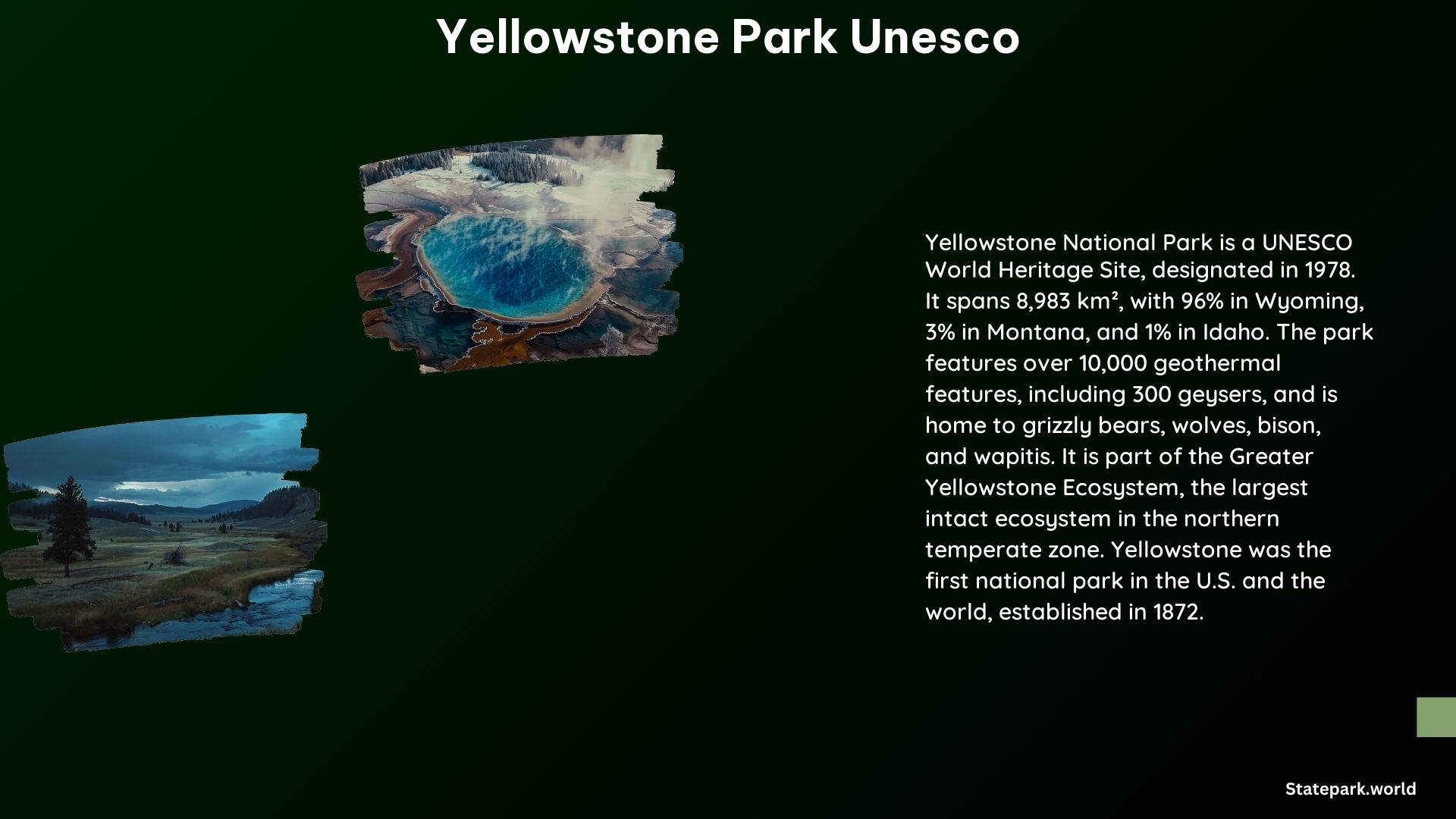Yellowstone National Park, located primarily in the western United States, is a renowned natural wonder that has been designated as a UNESCO World Heritage Site since 1978. This prestigious recognition highlights the park’s exceptional natural and cultural significance, making it a must-visit destination for nature enthusiasts and conservation-minded travelers.
Yellowstone’s UNESCO Designation
Yellowstone National Park was the first site in the United States to be designated as a UNESCO World Heritage Site, a testament to its global importance. The park was selected based on the following criteria:
- Criterion (vii): Yellowstone possesses superlative natural phenomena and areas of exceptional natural beauty and aesthetic importance.
- Criterion (viii): The park is an outstanding example of major stages of Earth’s history, including the ongoing geological processes that shape the landscape.
- Criterion (ix): Yellowstone represents significant ongoing ecological and biological processes in the evolution and development of terrestrial, freshwater, and coastal ecosystems.
- Criterion (x): The park contains the most significant and important natural habitats for in-situ conservation of biological diversity, including rare and endangered species.
Factors Affecting Yellowstone’s UNESCO Status

Yellowstone’s status as a UNESCO World Heritage Site is not without its challenges. Over the years, the park has faced various threats that have the potential to impact its exceptional natural and cultural resources. Some of the key factors affecting Yellowstone’s UNESCO designation include:
- Climate Change: Warming temperatures, changes in precipitation patterns, and the resulting impacts on the park’s ecosystems and wildlife are significant concerns.
- Invasive Species: The introduction and spread of non-native plant and animal species can disrupt the delicate balance of Yellowstone’s natural habitats.
- Visitor Impacts: The increasing number of visitors to the park can lead to overcrowding, habitat degradation, and the potential for human-wildlife conflicts.
- Resource Extraction: The potential for oil, gas, and mineral extraction activities near the park’s boundaries can pose threats to its ecological integrity.
Conservation Efforts and the UNESCO Designation
Yellowstone’s UNESCO World Heritage Site designation has played a crucial role in the park’s conservation efforts. The designation has:
- Raised International Awareness: The UNESCO recognition has brought global attention to the importance of Yellowstone’s natural and cultural resources, fostering international cooperation and support for its protection.
- Facilitated Monitoring and Reporting: Yellowstone is required to regularly report to the World Heritage Committee on the state of its resources, threats, and conservation progress, ensuring transparency and accountability.
- Encouraged Sustainable Tourism: The UNESCO designation has promoted responsible tourism practices, helping to balance visitor enjoyment with the preservation of the park’s fragile ecosystems.
- Supported Collaborative Management: The UNESCO designation has facilitated collaboration between various stakeholders, including federal agencies, local communities, and international organizations, to address the park’s conservation challenges.
Conclusion
Yellowstone National Park’s designation as a UNESCO World Heritage Site is a testament to its global significance and the ongoing efforts to protect its exceptional natural and cultural resources. As visitors and enthusiasts, we have a responsibility to support the park’s conservation initiatives and ensure that Yellowstone’s wonders are preserved for generations to come.
References:
- National Park Service. (2021). Yellowstone National Park: World Heritage Site. Retrieved from https://www.nps.gov/articles/000/yellowstone-national-park-world-heritage-site.htm
- United States Geological Survey. (2023). Yellowstone Recognized as One of the First 100 IUGS World Geological Heritage Sites. Retrieved from https://www.usgs.gov/observatories/yvo/news/yellowstone-recognized-one-first-100-iugs-world-geological-heritage-sites
- Wikipedia. (n.d.). Yellowstone National Park. Retrieved from https://en.wikipedia.org/wiki/Yellowstone_National_Park
- UNESCO World Heritage Centre. (2012). Yellowstone National Park. Retrieved from https://whc.unesco.org/en/list/28/
- National Park Service. (2021). Yellowstone’s Biosphere & World Heritage Designations. Retrieved from https://www.nps.gov/yell/learn/management/unesco-designations.htm.
